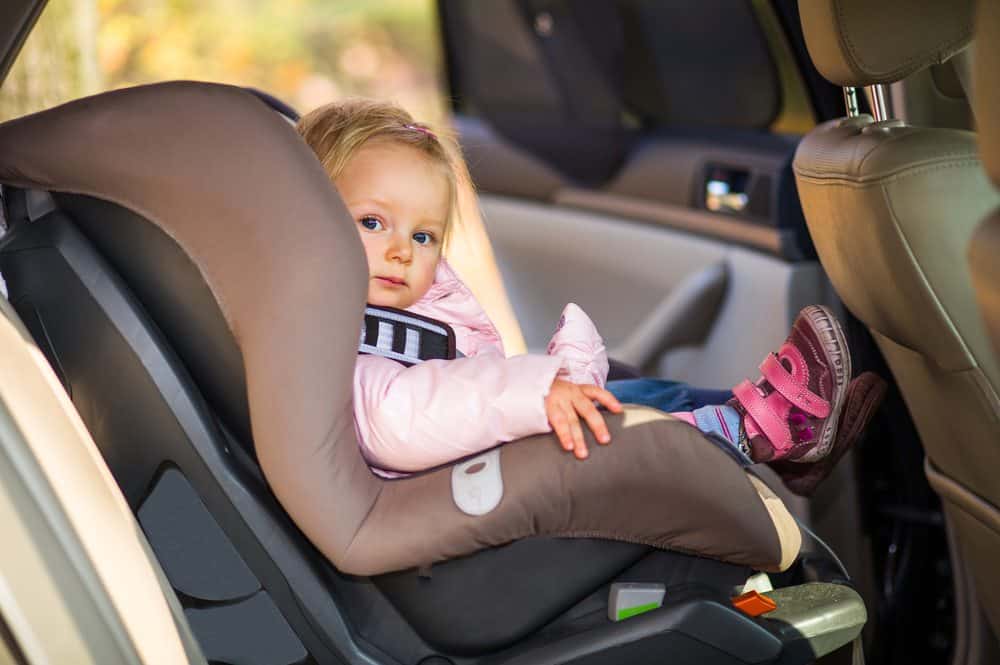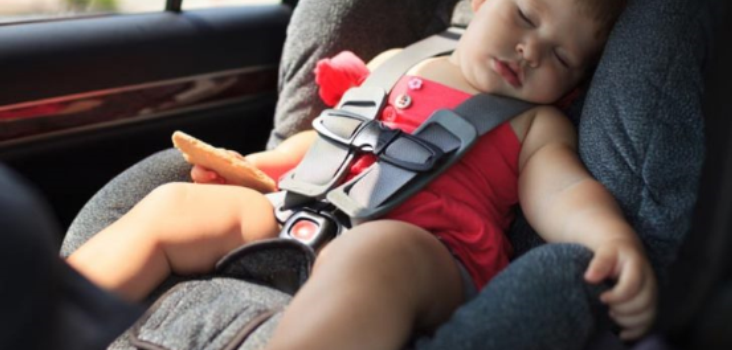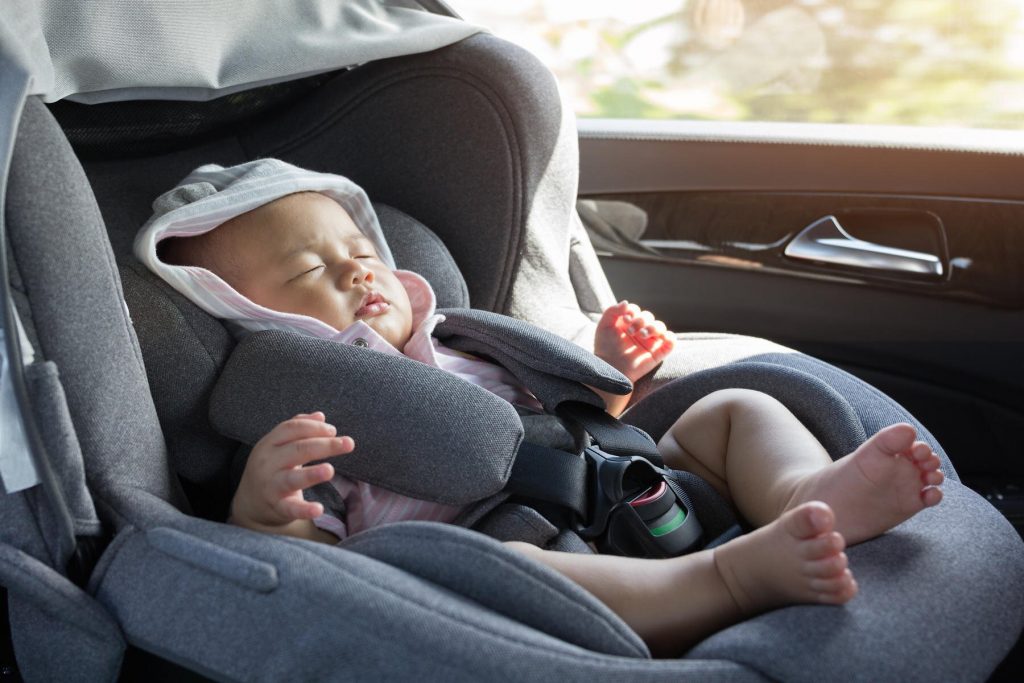
Common car seat mistakes parents make and how to fix them is a topic that is essential to all parents; new and experienced. No one is without fault, and no one is capable of remembering every single task. Yet, as parents, we always try to do our best.
See Also
Contents
Installation
Starting from the very beginning, when you install your car seat, you must check it before every ride. Make sure that it doesn’t move more than 1 inch in any direction.
If it does, try to put as much weight on it and readjust it by re-locking either the seatbelt or the LATCH system.
Car Seat Milestones
The biggest mistake that could face any parent when dealing with their children’s car seats is putting them in seats that are unparallel with their weight and length. Lately, the age restrictions on car seats have been removed.
That is because some children reach certain weights and heights that are appropriate for specific car seats, but their age is yet to catch-up. This can create confusion and crisis in case of any accidents.
There are three different types of uncalled for car seat migration:
1. Rear to Front
It’s a given that children’s heads are much heavier than their bodies. That’s why they need to be kept stable at all times. If, for any reason, a child’s head is thrown in any direction with force, it could very well cause serious injury to the brain, spinal cord, and internal organs.
Hence, their time in a rear-facing car seat must be concluded fully. What the rear-facing car seat does is that it absorbs any impact and distributes it all over itself, preventing the child from any harm. Also, there’s no chance of the child being hit by any projectiles or ejected out of the vehicle.
So, in order to upgrade your child from the rear-facing car seat to the front-facing car seat, you must let your precious one reach the maximum height and weight.
Additionally, you can’t leave your child in a rear-facing car seat forever. When it’s time, they must be moved. Otherwise, they will be in danger of posture defects, and the car seat won’t perform its job properly in case of impact.
2. Front to Booster
Now your kid is in the front-facing car seat, and you think it’s time for them to be moved to the booster seat. Still, booster seats lack a lot of the support offered by car seats; hence the belts are crucial, and their position is key.
The lap belt must be placed over your child’s thighs snuggly, while the shoulder belt must cross the point between the middle of your child’s chest and shoulder.
3. Booster to Regular
This happens for most children between the ages of 8 and 12; more specifically, they should reach the height of 4.9 ft. That will enable your child to sit straight with their back flush against their seat and their knees lying against the end of the seats comfortably and without stretching for the entire length of the car ride.
Recline Angle
Babies cannot hold their heads up. Consequently, it’s always the parent/caregiver‘s job to make sure that they are placed in the correct position. A child’s airway is very narrow, and it can be easily blocked by maintaining a wrong posture for a long time.
Hence, the reclining angle is vital for the car seat and must be checked repeatedly as your child grows. This angle should change to accommodate his growing strength. Most car seats must have an adjuster that is accordingly labeled.
Straps and Clips
Straps are the essence of a car seat. Thus they should be placed correctly and snug against your child at all times.
1. Clothes
Wearing puffy clothes will definitely ward-off the cold from your child; however, it’ll compromise his safety. This buffer jacket will create an empty slippery space between your child and the strap.
The best option is to take off the jacket, place them in the car seat and strap them in well, then cover them with the jacket or with a blanket.
2. Pinch Test
In the haste of getting everyone dressed and into the car, you might forget that you didn’t adjust the straps of the car seat to your child. So, the easiest thing that you can do before you turn on your car is to do the pinch test.
That involves pinching the strap of the car seat; if it wrinkles or you can pick up a healthy length of that strap, then you need to tighten it a lot more.
3. Adjustment
As your child grows, they will migrate from a rear-facing car seat to a front-facing car seat, and next, a booster seat. In today’s markets, you can find flexible car seats that can do all of these jobs.
Nonetheless, every state has its own set of straps that some parents might forget about, and they end up sticking with the old ones. For instance, when you convert the rear-facing car seat into a front-facing car seat, you have to remember to use the tether strap, which holds the car seat from its top point to a hook in the car. That is very important for stability.
Registration
Registration is an important step that must be done before your baby’s here because when you have the hassle of a new baby, you won’t be thinking about looking for your car seat’s card and registering it.
Nevertheless, it’s super important because through registering, you’ll be able to get alarms and notifications from your manufacturer regarding updates, faulty pieces that have been sold, or any maintenance where you’ll have to take the car seat back to the store.
Expiration Dates and Hand-Me-Downs
Mostly, car seats have an expiration date of around ten years. It’s a very long time, and the reason behind this is the change of rules and guidelines. The materials used in making the car seats are unusable or safe any more; the straps will become flimsy, and the plastic will be weak and breakable.
So, if you’re buying a new car seat, make sure to check its expiration date, especially if you plan on using it for multiple children. Plus, if you’re having a hand-me-down, or buying it secondhand anywhere, check the expiration date to make sure that it’s still usable.
Toys
Keeping your child occupied during a car ride is every parent’s dream, but it’s also every parent’s job to look out for their child’s safety. Adding all of the toys and jingles that could possibly harm your child in case of impact isn’t the wisest thing to do.
A stuffed animal with no plastic or hard parts should do the job quite well, and it’ll never turn into a projectile in case of impact.
Adult Example
As your child grows, they will always follow what you do. As a parent, you will be shaping your children, not just by telling them what to do, but by doing it yourself. If your child doesn’t witness you buckling up yourself, they will never take it seriously.
Consequently, as soon as possible, they will be taking off their seatbelts and putting themselves in major danger. So, as a parent, you always have to set an example first.
Final Thoughts
This is our round-up of common car seat mistakes parents make and how to fix them. All parents must look out for their children’s well-being, and through small, easy steps, the task gets much more manageable over time. As you make a routine of it, your children will follow in your example, and life will be a lot easier.






